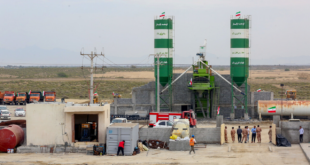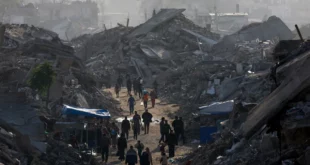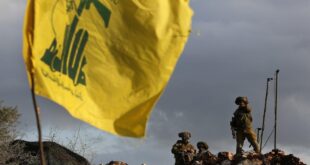BAGHDAD — Donny George of the Iraq Museum is more concerned about security than most museum directors.
Books on George’s shelves summarise his struggle: “Institutional Trauma: Major Change in Museums and its Effect on Staff,†“Museum Security and Protection†and “Moving the Mountain: A Guide to Moving Collections.â€
“I tell the guards, if they shoot one bullet, then you shoot 100. We must show that the place is well-protected.â€
With two Iraq Museum guards in hospital after just such an attack, George believes insurgents are testing security with a view to repeating the massive looting that followed the US-led invasion of March 2003.
And that is why the museum’s reopening has been delayed indefinitely, as car bombs continue to explode and staff often find their way to work blocked by anti-insurgent sweeps in what George says is a “hot†Baghdad neighbourhood.
“We thought everything would calm down after the [January] elections, so we planned an exhibition for July, but instead things have escalated.â€
“The museum is a soft target and at the moment if we wanted to hold an exhibition we would need the whole Iraqi army to protect it.â€
But George, 55, and his colleagues are not sitting around idly waiting for peace. The museum’s repainted corridors are bustling with activity, although some of it is from archaeologists who have come from the provinces to report looting.
Elsewhere, young conservators work on broken artifacts in rebuilt laboratories, others carry out the tedious task of cataloguing while the stocky and bright-eyed director steers the museum through these dark times.
George says that of 15,000 treasures stolen in the chaos following Baghdad’s fall, about half have been intercepted, from Kuwait to Japan and Italy. But the museum is far from ready to take them back. “They’re safe with the authorities there,†he says, praising the cooperation of countries like Jordan and the United States but accusing others of inaction.
“Unfortunately, Iran and Turkey have never gotten back to us about what they’ve seized, and we know they have artifacts.â€
The museum’s halls, once a repository of the finest pieces from “the cradle of civilisation,†now house empty display cabinets, some smashed, all veiled in dust.
The Assyrian hall offers the only reminder that this was once a world-class museum, lined with subtly lit stone sculptures of ancient gods and winged creatures.
These were simply too heavy to be stolen, and perhaps not ornate enough to attract looters’ predatory attention. Outside, the museum’s courtyard is filled with objects from Iraq’s more recent history under deposed leader Saddam Hussein.
Two of Saddam’s garish gold-painted carriages squat under tarpaulins in a dusty corner, while nearby half a dozen stacked freight containers filled with kitsch from his palaces resemble a modern art installation.
“We’ll look after those objects, but we won’t put them on display,†says George, while admitting the time will come for a museum to Saddam’s era — as long as it is not propagandistic.
“There could be such a museum in one of his palaces because he’s part of the country’s history, positive or negative. Museums are there to teach and show the facts. People should then judge for themselves.â€
George recently said that he considered US help in rebuilding the museum as an apology.
 Eurasia Press & News
Eurasia Press & News



